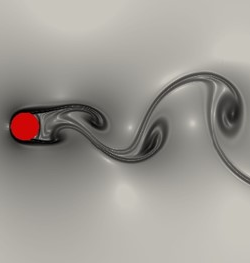HPC numerical simulation codes routinely generate huge amounts of data that engineers and physicists have to analyze to understand numerical simulation results. Due to the scale of this data, analysis can be very resource and time consuming and thus some physics effects can be hard to detect, especially in 3D. Analyses can be conducted online, .ie interactively, and therefore require visualization pipelines to be able to provide fast results to the end-user to avoid waste of human time. Analysts can also execute offline analyses, which are useful to carry on advanced surveys to extract phenomena of interest, or simply for communication purposes with the production of pictures or movies. The aim of this research is to provide algorithms and tools to make multi-physics online and offline analyses easier and faster. To this purpose, several areas of research will be explored, such as but not limited to: progressive techniques that allow earlier results to be carried on to the analyst (in situ, out of core, streaming, time coherence …), data reduction dynamically adapted to the simulation output, and also new 3D filters involving advanced visualization techniques (volume rendering, virtual/augmented reality…) and artificial intelligence new developments.
Keywords: Visualization, Data analysis, Data reduction, HTG




